Tree Swing Cartoon Pictures
The Tree or Tire Swing - Funny Diagrams
The famous tree swing picture (also known as tyre swing, tire swing, rope swing) depicting tyre (or tire) and rope swing in various states of dysfunctionality, illustrates the pitfalls of poor product design, or poor customer service, and the dangers of failing to properly listen to customers and interpret their needs.
The tree swing also demonstrates the dangers of departmental barriers, and failures of departments to talk to each other, and to talk to customers. As such, the tree swing is perfect for training these areas of quality, communications, customer care and inter-departmental relations. If you are using the tree swing to highlight a training subject most people very readily interpret the pictures into their own organisational situations. Some tree swing discussion points are at the foot of the page.
See the new BusinessBalls tree swing cartoons - a specially produced collection extending the original tree swing theme to wider aspects of business and organisational daftness.
The Tree Swing
| What marketing suggested | 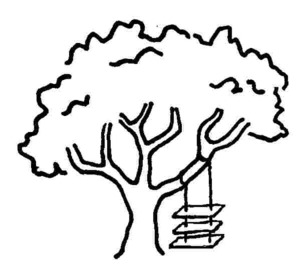 |
| What management approved | 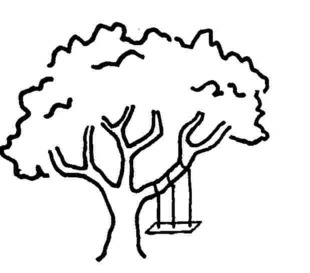 |
| As designed by engineering | 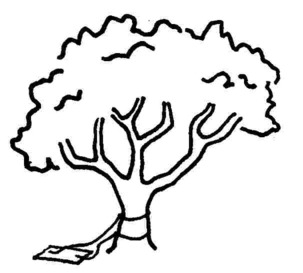 |
| What was manufactured | 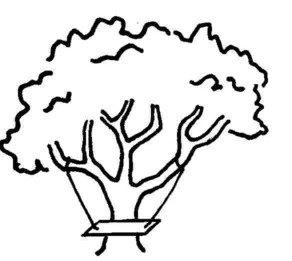 |
| As maintenance installed it | 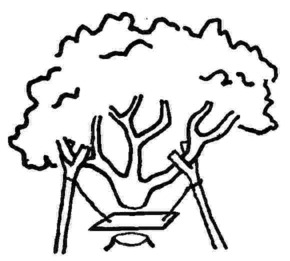 |
| What the customer wanted | 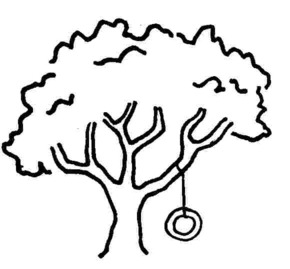 |
Points of Discussion
Normally no pointers are needed - people very readily interpret the pictures into their own organisational situation. Here are a few typical 'them and us' reactions just in case:
Marketing - Adding overly complex, unnecessary value - embellishment, putting their own mark onto things, creativity for creativity's sake, subjective as opposed to objective. May ignore customer survey feedback, failure to consult with engineering, production and anyone else in the organisation.
Management - cost-conscious, process-led rather than output-aware, failure to understand and interpret real issues and implications, failure to ask questions, committee decisions produce impractical solutions, removed from reality, detached from customers and front-line staff, failure to consult with users and functional departments.
Engineering - technical interpretation rather than practical, unconcerned with aesthetics and ergonomics, lack of consultation with specifiers and user representatives, inappropriate materials and absence of styling.
Manufacturing - production specification over-rides design considerations, detached from users, specifiers, designers, and everyone else except other manufacturing staff. Unconcerned with usability or functionality, unconcerned with bells and whistles and added value, totally focused on production efficiency, cost and time, lack of liaison with all other departments.
Maintenance - necessity is the mother of invention, very big tool-boxes, huge stocks of parts and ancillaries, materials, nuts, bolts and all other fixings known to man, happy to work all hours, especially evenings, weekends and public holidays at treble-time-and-a-half with days off in lieu, never consult with specifiers or customer specifications, enjoy quick-fixes, sticky-tape, mastic, bending bracketry, planks of wood and extended tea-breaks, never liaise with any other departments and think management are all useless idiots who can't even change a plug.
Customers - if only we'd listened, understood, and checked with them once in a while......
Origins
Uncertainty surrounds the origins of the tree swing cartoons. Several variations of the cartoons now exist, some extending to more than six pictures, in colour and in more elaborate detail, covering additional departmental perspectives (see the specially designed series of Businessballs Treeswing Cartoons, for example).
The simpler cartoons above are re-drawn from the old photocopied versions of the tree swing cartoon which hung on many office walls especially in the 1970s and 1980s.
Those 'original' drawings seem to have provided the basis for the version which appeared in John Oakland's book Total Quality Management, first published in 1989.
In the first few years of the world-wide web I recall seeing a web page reference which named a cartoonist who supposedly originated the tree swing cartoons in the first half of the 1900s, but regrettably I never kept and cannot find that reference. It may or may not have been correct of course.
I have seen suggested sources of the tree swing that would place the origin in the last two or three decades, and while most of the suggested sources often carry amusing versions and interpretations of the tree swing, the true origin is perhaps earlier.
Total Quality Management, J Oakland, 1989.
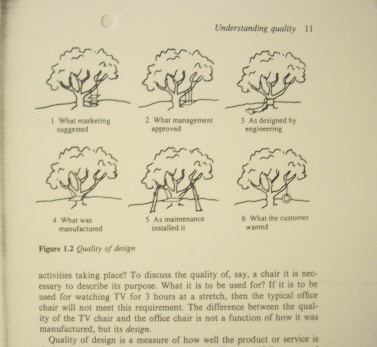
This information (April 2007, C Winter) supports the view that the tree swing cartoon was circulating in UK offices in the 1960s, if not before: "In 1969 I worked for the Customs & Excise in Southend writing the original VAT accounting system. At that time, the Civil Service had a regular internal newsletter called 'Red Tape'. I have a page extracted from a copy of that newsletter that has at least six of those exact tree swing pictures..."
More recently I received this recollection (thanks S Hytche, 29 Oct 2010): "As a college student back in 1968-69, I worked part-time in IT key punch operations. The tree swing was around then to show what end-users got from 'systems people' and to make the point that the users needed to be involved in all phases of the development process..." (This logically refers to the 'IT Project' version of the tree swing cartoons, rather than the 'marketing' version, or 'teacher' version, which is shown below.)
And this submission (May 2007, thanks Mark Linton): "...I have a copy of 'variations on a tree swing' that was printed in the San Franscisco Examiner on Sunday, October 12, 1975, with the accompanying text - 'A sometime publication, The Teaching Paper, is produced by Portland teachers who somehow have escaped the smothering coccon of pedagogy. In this excerpt from their admirable sheet, they cast a bemused glance at the befuddlements of a bureaucratic school system and composed a hypothetical example of how various school entities would face a minor construction problem...' "
Mark kindly sent me photocopies of the San Francisco Examiner article which refers to a publication called This World, in which the tree swing model is shown in a different sequence than commonly represented, featuring 'students' in place of 'customers'; 'teachers' in place of 'marketing'; 'principals' in place of 'management'; 'central office' instead of 'engineering'; and a magnificently detailed diagram 'as board of education approved it' instead of 'what was manufactured'. The photocopied newspaper cartoon includes a (probably spoof pun) reference to 'Jury and Rigg School Architects'.
Unfortunately the San Francisco Examiner article does not give a year for the Teaching Paper/This World publication of the teacher versions of the tree swing cartoons. Was the teaching version an adaptation of the marketing 'customer/supplier' cartoon and/or the IT-project' versions? Probably, according to above recollections suggesting that such cartoons existed in the late 1960s. Here are the San Francisco article photocopies sent to me by Mark Linton.
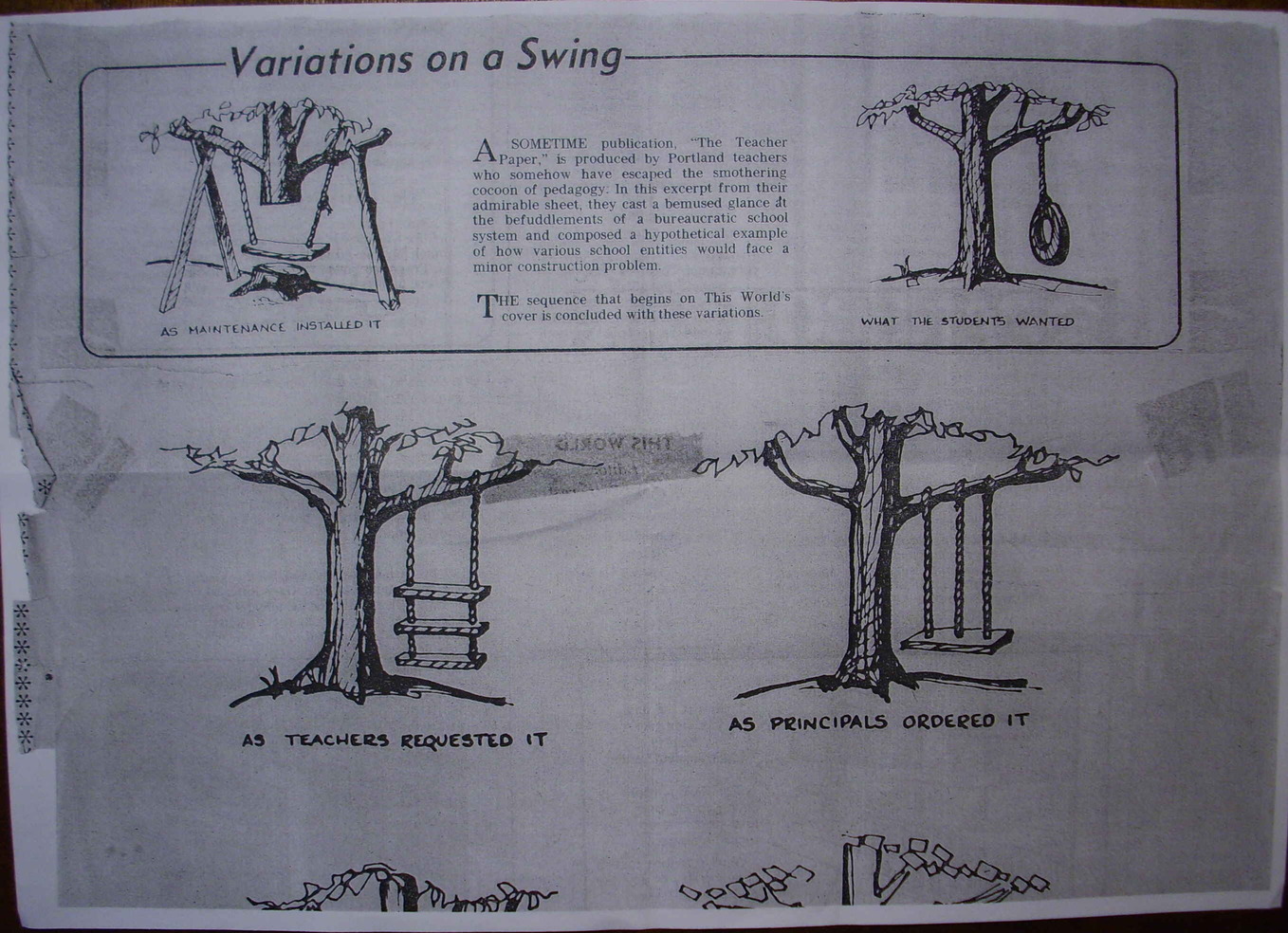
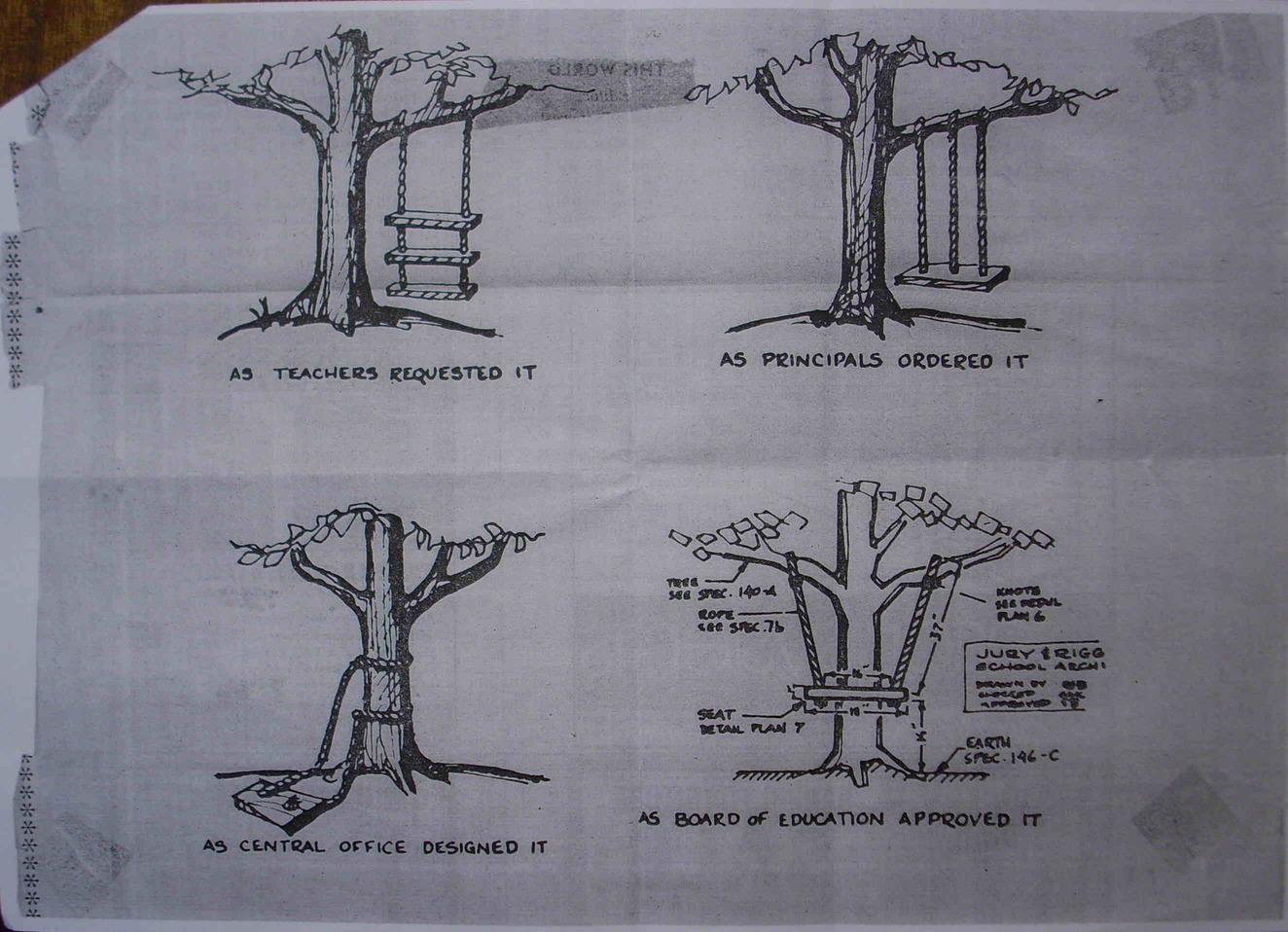
From the San Franscisco Examiner on Sunday, October 12, 1975, with reference to The Teaching Paper, apparently produced by Portland teachers. With acknowledgements to Mark Linton.
In January 2008, I received from Tom Fleet (on behalf of his father) the following wonderful picture of the tree swing cartoon, apparently from the 1970s. The summary line at the foot of the picture 'Communication means: Saying and hearing have the same message' aptly describes a crucial aspect of communications which modern trainers strive to convey today. Tom informed me that his father probably acquired the picture during his training as a tire (tyre) store manager with a major chain (USA). The style of the picture suggests that the cartoon was perhaps already firmly in the public domain during the 1970s.

With acknowledgements to T and W Fleet.
Thanks also to N Burgess for the following recollections (April 2008): "...I remember seeing a version of this when I worked for British Steel Corporation. The labels were slightly different – 'What the Plant Manager wanted,' etc., to suit the steel industry but basically it was the same. I cannot remember the exact date but it would be sometime between 1969 and 1975, more likely 73-75..." (Thanks N Burgess)
Thanks to W Farmer (22 Oct 2008) for this: "...I have a copy of a book, published in the UK and distributed in the US, which used one of the tree swing pictures on its cover, and then included the sequence of six tree swing pictures on the first page. The book is: Guide to Good Programming Practice, Editors: B L Meek and P M Heath ISBN 0-85312-145-1 (Ellis Hoarwood Ltd, Publishers) ISBN 0-470-26869-7 (Halstead Press, a division of John Wiley & Sons, distributor in the US). The six pictures are the same style as the ones on your website, but the captions are different, being directed toward software development:
1. As proposed by the project sponsor
2. As specified in the project request
3. As designed by the senior systems analyst
4. As produced by the programmers
5. As installed at the user's site
6. What the
user wanted
The pictures include the caption: 'Acknowledgements to Unknown Author'. The book's source for those pictures is given as the University of London Computer Centre Newsletter No. 53, March 1973. I've included scans of both pages below..."
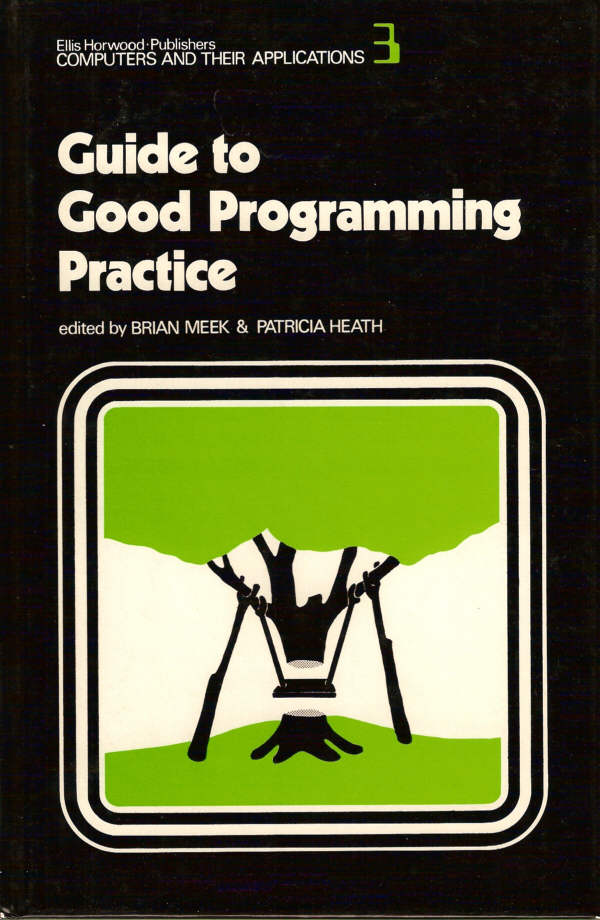
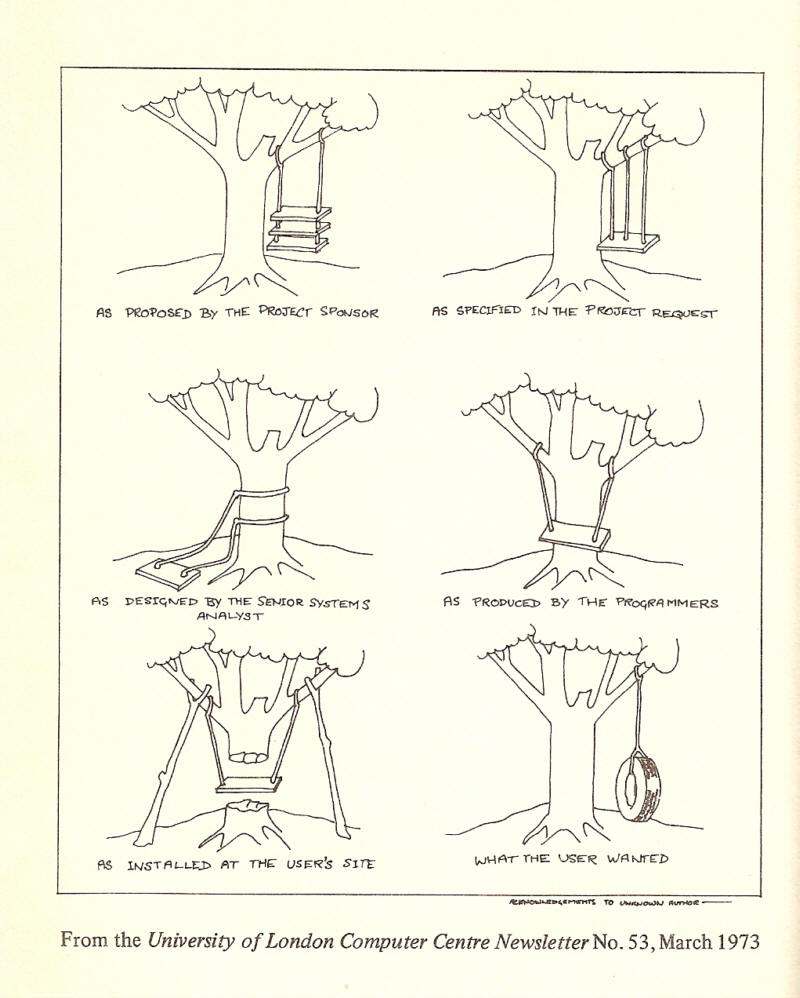
Thanks to W Farmer for the pictures above, from Guide to Good Programming Practice, Editors: B L Meek and P M Heath (1979) ISBN 0-85312-145-1 (Ellis Hoarwood Ltd., Publishers) ISBN 0-470-26869-7 (Halstead Press, a division of John Wiley & Sons, distributor in the US).
Thanks to A Allen (Aug 2009) for sending the treeswing cartoon example below. This version is for an IT system project situation. The year and origin are unknown. The pictures are very typical of 1970s photocopied versions, although this sort of cartoon representation persisted through the 1980s, 90s and beyond.
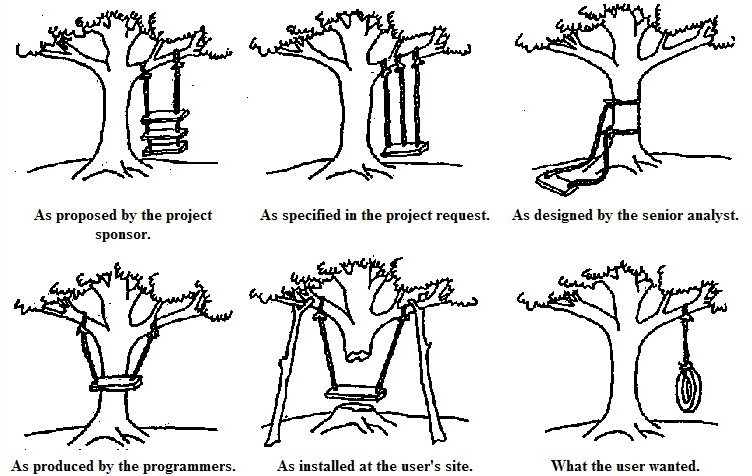
With acknowledgements to A Allen.
Thanks to D Barrans (Jun 2010) for the following recollections: "... My dad brought home a copy of the tree swing cartoon sometime during my high school or junior high school years, which would have been sometime 1967-1973. It was a six-panel version, but I haven't found the exact variation on the captions. I do know they were not software-related... This was in the USA. He was working as a nuclear physicist at the National Bureau of Standards (now known as NIST) at that time..."
Thanks to M Tsao (Jun 2010) for the following: "... Although this is relatively new (I photocopied it from a co-worker's cubicle in 1992), it's a bit different from the ones you have on your site. I don't know what the book was, but this was at a large Silicon Valley software company, and the terminology suggests that the book discusses software development..."
Below is the copied page. Subsequently to publishing this we have been able to identify the book source (thanks J van der Bie, Sep 2012), namely Principles Of Software Engineering Management by Tom Gilb, published 1988. The cartoons appear on page 45 as figure 4.1 and are used to support Gilb's view that where design fails it is because of poor attribute specification, rather than poor functional specification, which is a noteworthy observation and not limited to computer software design. These pictures are quite different to the first versions to become widely copied in the 1970s. They feature just the trunk and major tree branches; none of the outer branches and leaves, and not the base of the tree. These more modern style pictures also feature new ideas for the faulty swings.
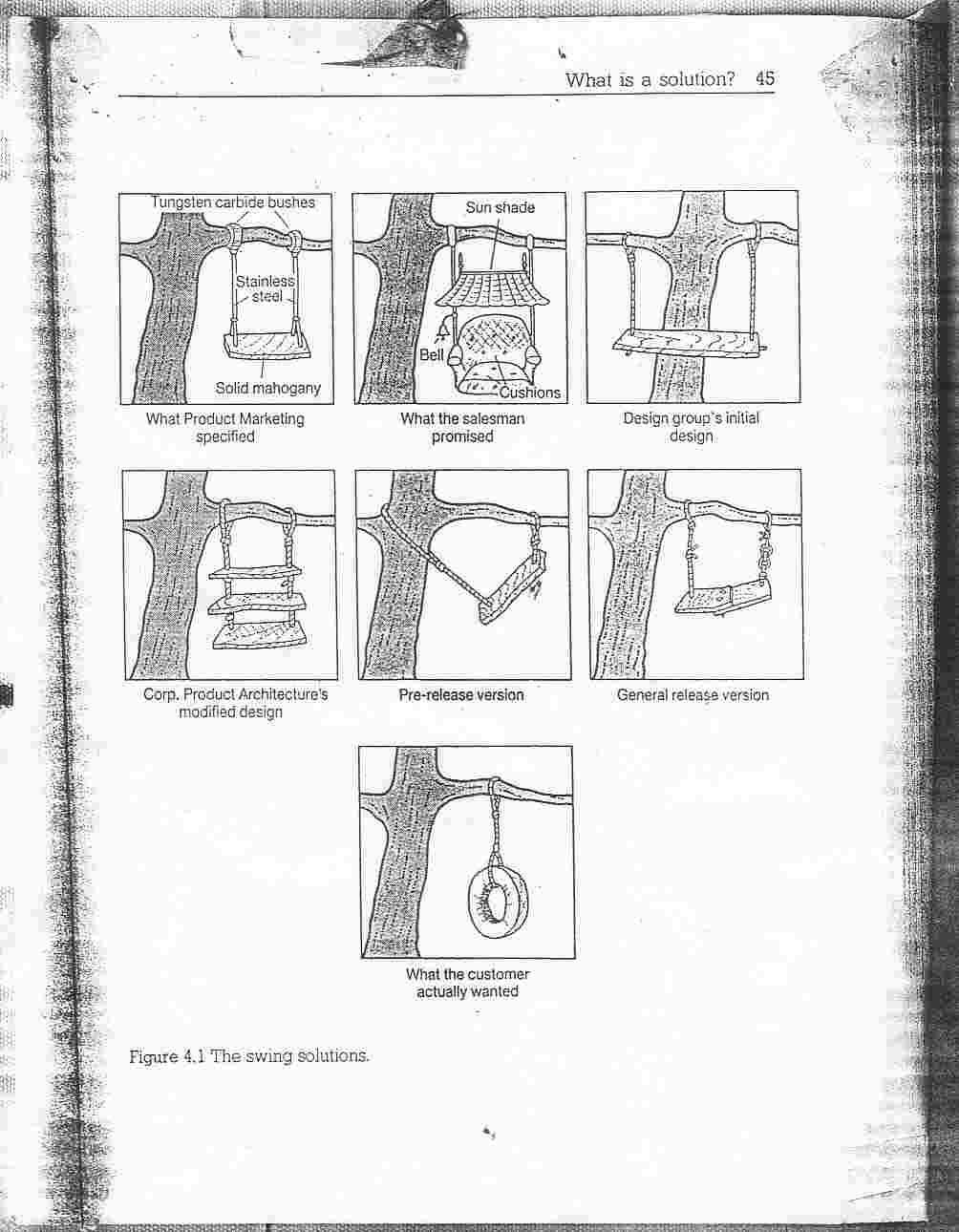
With acknowledgements to M Tsao for the picture above. It is from Principles Of Software Engineering Management by Tom Gilb, published in 1988 by Pearson Education, Edinburgh, UK.
The tree swing picture below was sent to me in Mar 2013 by NZ design/technology specialist S Høgh, who (based on a rough photocopy) refined and improved the graphic for teaching design in 1993, using the very apt heading: 'Problem solving is an art form not fully appreciated by some'. It's a fine version of the tree swing pictures and the contribution is greatly appreciated. It also proves that the early picture styles persisted into the 1990s.
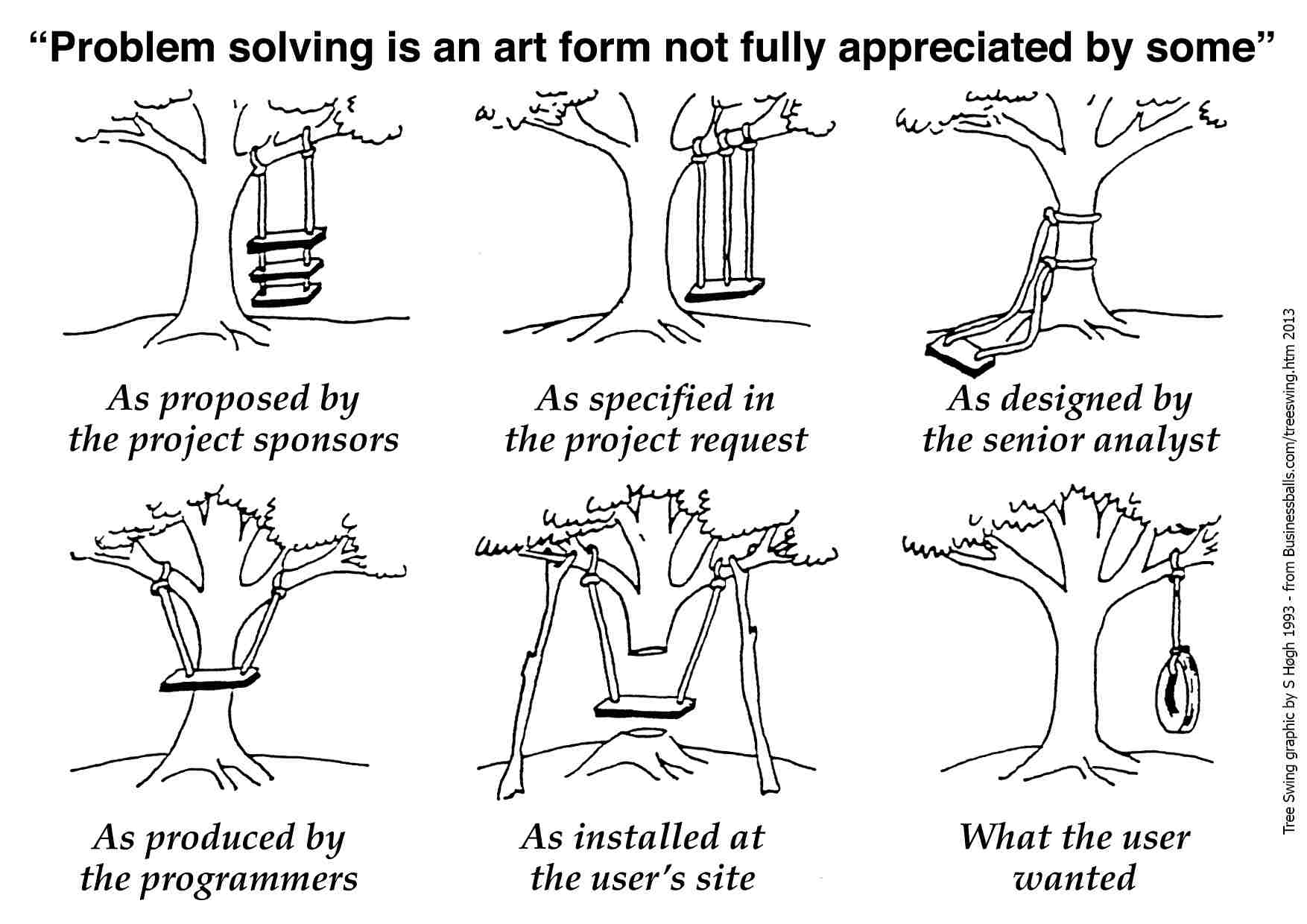
See the new Businessballs tree swing cartoons - a new collection of redrawn pictures for the modern age of organisational ridiculousness.
See Also
Other enjoyable training and learning resources on this website:
- stories
- amusing quotes and maxims
- cv tips and templates
- interview tips and techniques
- acronyms
- free team building games
- free online diagrams and tools